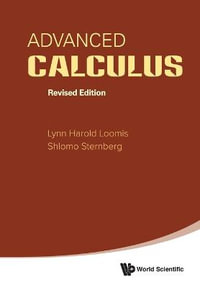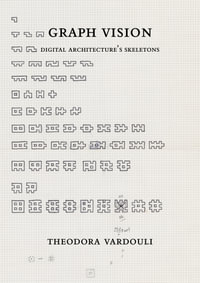
At a Glance
152 Pages
Revised
23.5 x 17.8 x 0.64
Paperback
$106.50
or 4 interest-free payments of $26.63 with
orAvailable for Backorder. We will order this from our supplier however there isn't a current ETA.
Industry Reviews
The appearance of this beautiful, modest-sized (166pp) book in this time and place is, for me personally, an instance of splendid serendipity. My reason for regarding this publication as a case of perfect timing is that my own work in number theory has begun to take a frighteningly topological turn over the last few years (in the French sense, so to speak), and some old lacunae have to be taken care of. Now! And A Topological Aperitif looks to be a great place to start.
The book would serve well for self-study and would play an important role in an introductory course as a supplementary level text to one of the established players, as I will discuss at greater length presently. It would actually also be perfect for a seminar in which various topics could then be pursued in greater depth using various supplementary sources.
I should like to preface my review proper with a few personal reminiscences for which I beg the reader's indulgence.
More years ago than I care to admit, I enrolled in undergraduate topology, at first full of enthusiasm and good intentions. But soon I proceeded to cut most of the classes because I was goofy and irresponsible and, if not in love, then heavily in like. I had become profoundly romantically infatuated with a pretty flautist whose music-department schedule allowed me to spend the hour ostensibly reserved for topology sitting on a bench near a fountain, gazing into her eyes rather than at a blackboard covered with what were to me very weird pictures. The romantic liaison did not last and I didn't learn topology (although I passed the class).
In graduate school my elective courses outside of number theory ran toward Fourier analysis, trigonometric series, and commutative Banach algebras, even though no one would accuse me of being an analyst. As regards topology, it was by now strangely and sneakily fascinating to me, having glimpsed all those delectable commutative diagrams and longexact cohomology sequences in general department colloquia and on sundry blackboards in open offices. I even had the great pleasure of attending a seminar with Karoubi, whom I was ruefully unprepared to appreciate properly (though he was impossible not to like and admire). But all in all: no real learning of topology took place for me.
I have grown more and more sorry about this gap in my knowledge over the years (although some of the problem was solved in an ad hoc fashion: teaching the subject helps, even if it's done badly). But now there is another real and pressing need to correct the problem: techniques from modern algebraic geometry have become big players in my work. I like to learn new and unfamiliar material within a framework of analogies, if possible, and so it has been my way for a while now to try to understand some of the new and high-falutin' stuff concerning, say, derived categories, by means of juxtaposing these developments against the corresponding staples of algebraic topology. (Mapping cones come to mind right away, for example.) But the shortcomings in my education in topology, described self-indulgently above, have made this approach increasingly difficult, causing me to seek a more formal course of self-study. It would be nice to go a linear route, with as one objective the development of a sort-of latter-day topologist's intuition. I think the present book by Huggett and Jordan, distinguished by clear and wonderful exposition and laden with informal motivation, visual aids, cool (and beautifully rendered) pictures, etc. fits the bill to a tee as a point of departure.
Indeed, I particularly want to recommend the book as an initial point for just about any course of studies in topology, whether it be a self-study affair such as what I'm now about to undertake, or something more in the orthodox mainstream of a college or university education in mathematics. Despite my being topologically challenged, my department has twice allowedme to teach the same undergraduate topology course which I cut so successfully almost three decades ago and I have always gone the Munkres route. My next time at bat I will introduce A Topological Aperitif as, at the very least, a supplementary text.
After such a wealth of unsolicited personal information let me now get down to some specifics regarding the book.
The authors' characterization of their book as an aperitif is right on the money. The main course (starting with Munkres' book, for example) is to be had elsewhere, as Huggett and Jordan state at the onset: "[W]e hope to whet the reader's appetite for this way of thinking," which, a sentence earlier, they describe as "conceptual and geometric rather than formulaic." And so it is that the book succeeds wonderfully at providing an intuition to the almost parochial familiarity that topologists seem to have with their specific mathematical objects - a Fingerspitzenkunde that I've grown to be more and more jealous of ....
...Note that the book's arrangement and the absence of analysis situs proper (or point set topology) disqualify the book as a solo text for a mainstream American undergraduate topology course. Hence my suggestion that A Topological Aperitif serve primarily as a supplement in such a setting. Or, as I already indicated above, it would be a marvelous experiment to use it in a student seminar, aimed at exposing the participants to topology-for-insiders, with the proviso that topics should be pursued in greater depth via other sources.
Huggett and Jordan stress that the heart of the book is the study of homeomorphisms, surfaces and polyhedra, which material they promise is pitched at the level of a second year undergraduate. With Huggett in Plymouth, UK, and Jordan in Hull, UK, this leads one to ask whether the English still refer to their graduate studies as undergraduates; I don't know. But actually it matters not: their presentationis very, very clear and accessible, and the book would be used to great advantage on either side of the pond (or anywhere else I guess).
I'm even willing to go so far as to suggest that the book is likely to contribute materially to the seduction of a number of fledgling mathematics students to topology, seeing that it hints so successfully at what can be had down the line. In fact, Huggett and Jordan unabashedly introduce the reader, by now getting to be well-versed in the topologist's jargon and particular way of thinking, to truly sexy things: in their Appendix B they have a go at the Jones polynomial.
I should like to point out also that in the chapter "Polyhedra" there is a marvelous treatment of the Euler characteristic (in its first incarnation) and its attendant applications. After dealing with the Platonic solids Huggett and Jordan go to polyhedra on a torus, then on a Klein bottle, and then on the real projective plane. They go on to consider handle-bodies and a classification theorem. And the proof of Euler's theorem they choose is that of van Staudt, using trees and the dual polyhedron. The proof also contains an en passant invocation of the Jordan curve theorem. This is all a clear example of the authors' excellent taste!
The exercises provided in the book are excellent and critical. The preface contains the warning that "Although elementary, the mathematics in this book is sharp and subtle, and will not be properly grasped without serious attempts at the exercises, the challenge of which may be undone by a premature glimpse of an illustrated solution." And then Huggett and Jordan add a pithy bit of pedagogy: "If you want to be a pianist you don't just read music and listen to it, you play it." So there!
The book ends with a brief but very nice discussion of the history of the subject, focussed on the menu served as the foregoing aperitif.
This is a terrific book and I recommend it very highly.
MAA Online
"ATopological Aperitif provides a marvellous introduction to the subject, with many different tastes of ideas.Stephen Huggett and David Jordan have excellent credentials for explaining the beauty of this curiously austere but potentially enormously general form of geometry". Professor Sir Roger Penrose OM FRS, Mathematical Institute, Oxford, UK
| Computer Network Fundamentals | |
| Understanding Network Security | |
| Security Threats to Computer Networks | |
| Computer Network Vulnerabilities | |
| Cyber Crimes and Hackers | |
| Hostile Scripts | |
| Security Assessment, Analysis and Assurance | |
| Disaster Management | |
| Access Control and Authorization | |
| Authentication | |
| Cryptography | |
| Firewalls | |
| System Intrusion Detection and Prevention | |
| Computer and Network Forensics | |
| Virus and Content Filtering | |
| Standardization and Security Criteria: Security Evaluation of Computer Products | |
| Computer Network Security Protocols | |
| Security in Wireless Networks and Devices | |
| Security in Sensor Networks | |
| Other Efforts to Secure Information and Computer Networks | |
| Looking Ahead: Security Beyond Computer Networks | |
| Projects | |
| Table of Contents provided by Publisher. All Rights Reserved. |
ISBN: 9781848009127
ISBN-10: 1848009127
Published: 26th March 2009
Format: Paperback
Language: English
Number of Pages: 152
Audience: Professional and Scholarly
Publisher: Springer London Ltd
Country of Publication: GB
Edition Number: 2
Edition Type: Revised
Dimensions (cm): 23.5 x 17.8 x 0.64
Weight (kg): 0.27
Shipping
| Standard Shipping | Express Shipping | |
|---|---|---|
| Metro postcodes: | $9.99 | $14.95 |
| Regional postcodes: | $9.99 | $14.95 |
| Rural postcodes: | $9.99 | $14.95 |
How to return your order
At Booktopia, we offer hassle-free returns in accordance with our returns policy. If you wish to return an item, please get in touch with Booktopia Customer Care.
Additional postage charges may be applicable.
Defective items
If there is a problem with any of the items received for your order then the Booktopia Customer Care team is ready to assist you.
For more info please visit our Help Centre.
You Can Find This Book In

BLACK FRIDAY
RRP $39.99
$9.95
OFF

BLACK FRIDAY
RRP $48.95
$12.25
OFF





















